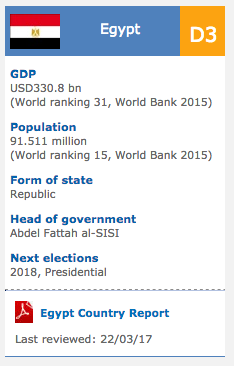Americas > Central America > Costa Rica > Costa Rica Economic Overview Growth on the path to recovery
Costa Rica: Costa Rica Economic Overview Growth on the path to recovery
2017/05/14

Costa Rica
Sound fundamentals but fiscal fragilities
|
|||||||||||||||||
- Related Articles

Climate change laws around the world
2017/05/14 There has been a 20-fold increase in the number of global climate change laws since 1997, according to the most comprehensive database of relevant policy and legislation. The database, produced by the Grantham Research Institute on Climate Change and the Environment and the Sabin Center on Climate Change Law, includes more than 1,200 relevant policies across 164 countries, which account for 95% of global greenhouse gas emissions.
Presidencia Perú
2017/03/04 The PPK cabinet has been working diligently to modernize the country and replace business confidence, while unlocking investments and infrastructure megaprojects in a bid to boost the country’s economy
- Costa Rica News
-
- AFGHANISTAN: UNWTO: International tourism – strongest half-year results since 2010
- AFGHANISTAN: Higher earning Why a university degree is worth more in some countries than others
- ARGENTINA: China looks to deepen ties with Latin America
- COSTA RICA: Costa Rica Annual consumer prices drop for sixth consecutive month in December and hover at historical low
- COSTA RICA: Costa Rica Economic activity in November records strongest expansion in over a year
- AFGHANISTAN: Global growth will be disappointing in 2016: IMF's Lagarde
- Trending Articles
-
- CAMEROON: Cameroon: Giving Priority to Education
- CAMEROON: Cameroon: English-speaking Students Do Not Return to School
- ANGOLA: Angola's Elections Trigger a Crisis of Legitimacy
- BURUNDI: Burundi: Govt Rejects UN Accusations of Crimes Against Humanity
- ISRAEL: PM Netanyahu leaves on historic visit to Latin America
- RWANDA: Rwanda: RDB's Good Problem - More Gorillas, Less Habitat












